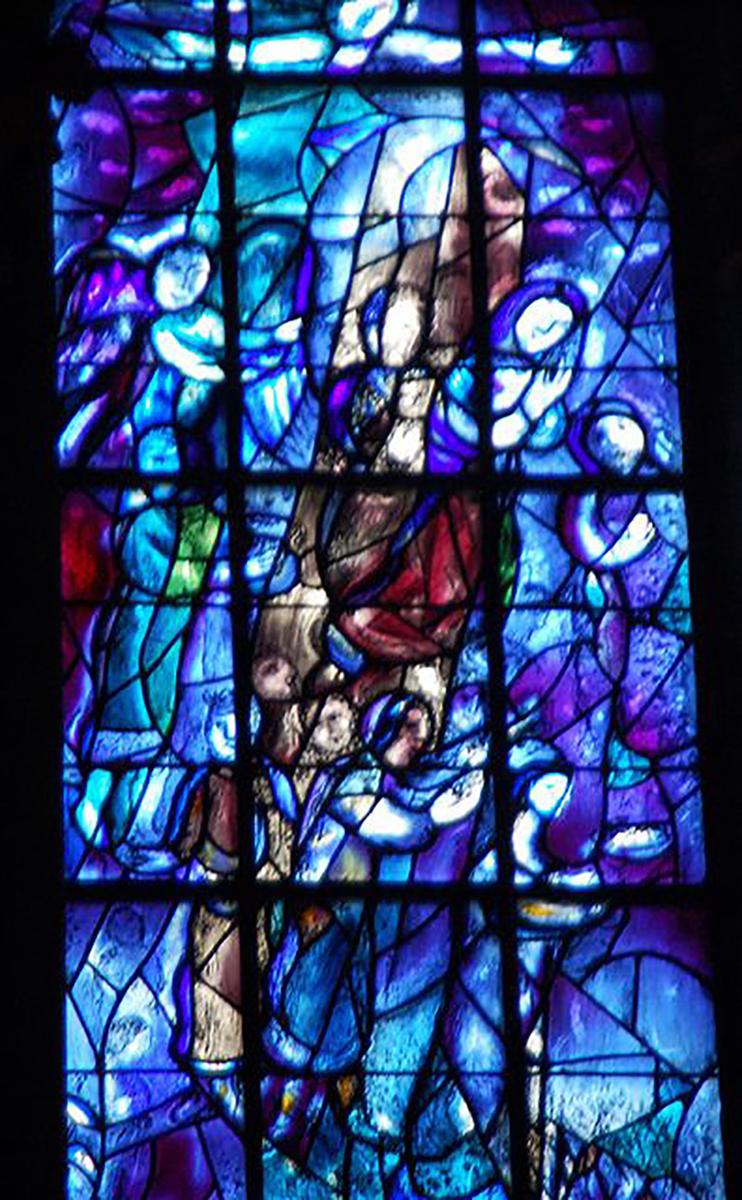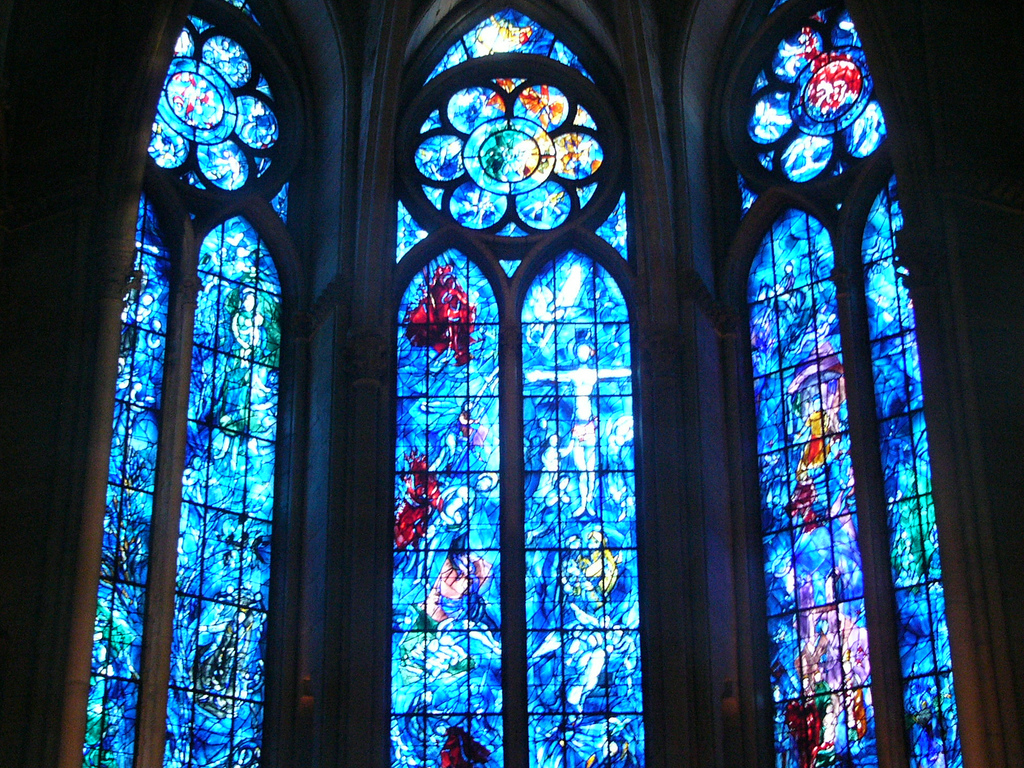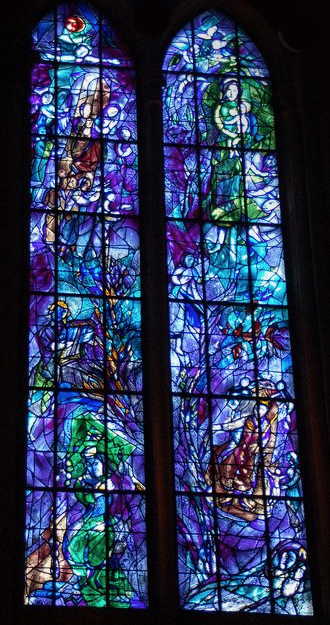January 5: Christ the Hope of Jews and Gentiles
♫ Music:
Day 34 - Friday, January 5
Title: Christ the Hope of Jews and Gentiles
Scripture: Romans 15:8-13
For I tell you that Christ became a servant to the circumcised to show God's truthfulness, in order to confirm the promises given to the patriarchs, and in order that the Gentiles might glorify God for his mercy. As it is written, “Therefore I will praise you among the Gentiles, and sing to your name.” And again it is said, “Rejoice, O Gentiles, with his people.” And again, “Praise the Lord, all you Gentiles, and let all the peoples extol him.” And again Isaiah says, “The root of Jesse will come, even he who arises to rule the Gentiles; in him will the Gentiles hope.” May the God of hope fill you with all joy and peace in believing, so that by the power of the Holy Spirit you may abound in hope.
Poetry:
Benediction
By Nicholas Samaras
For what we are given.
For being mindful of what we are given.
For those who grieve and those who celebrate.
For those who remain grateful in the face of everything.
For the assembly of words that links us together.
For individual speech that becomes speech shared.
For the transformations a written page may effect in us.
For those who pay attention.
For the teachers who gave us the chrysalis of language.
For the comrades of the heart who left us signposts.
For the parent who gave us the one ethic of discipline.
For ourselves who may take discipline to heart, and not resent it.
For the second chance that is the writing down.
For those who know that half of poetry is silence.
For the language of breath, and the breath that is prayer.
For those who wake to light, and know the depths of sacrament.
For this common meal, and us who bow our heads and partake.
For those who remember that “So be it” is also written
Amen.
CHRIST THE HOPE OF JEWS AND GENTILES
"May the God of endurance and encouragement grant you to live in such harmony with one another, in accordance with Christ Jesus, that together you may with one voice glorify the God and Father of our Lord Jesus Christ. Therefore, welcome one another as Christ has welcomed you, for the glory of God. For…” and then the passage for today’s meditation begins. We may welcome one another because Christ Jesus became a servant. God so loved the world that he came in flesh to his own people for all peoples.
In the light of our Advent focus, how shall we ponder the Jesse Window of Rheims Cathedral? How will this help us to follow the Apostle’s injunction to glorify God with one voice? We are recalled to the faithfulness of the God of the covenant with Israel, with David, out of the stump of Jesse, in sending the Messiah, the Christ, to fulfill the purposes of hope, Salvation, peace to humans, and the ending of exile, the establishment of a kingdom, the kingdom of God. Today’s poet, Nick Samaras, describes himself as writing ‘from a place of permanent exile’. Yet he writes, in his ‘Benediction’, of the second chance of poetry, the opportunity in silence, the metamorphosis promised from the chrysalis of language. This is the hope of transformation, of belonging - mindful of what, or rather, who has been given for us in our common sacramental meal.
Jewish artist, Marc Chagall, experienced his own exiles: from his already exiled Russian ‘pale of settlement’ upbringing to France, and then to the US during World War II, to eventually find his way back to France. His artistic legacy is recognized as powerful testimony to the strength of the Eastern European Jewish cultural identity that endured wave upon wave of ostracism, insult, injury and, horrifically, the ultimate evil of the Holocaust. This mistreatment, that expression of hate, ultimately despises the people whose identity is given in the identity of the Covenant making God, and continues to shocking degrees today in anti-Semitic attacks. Out of his experience, nonetheless, Chagall can still graciously bestow his art as as reminder to Christians of the roots of our hope. ‘For whatever was written in former days was written for our instruction, that through endurance and through encouragement of the Scriptures we might have hope’ (Rom 15:4) Does Chagall, through his stained glass, stand today, in the words of Samaras’ poem, as one speaking a good word, as one who remains ‘grateful in the face of everything’?
Canadian Jewish composer Srul Irving Glick’s Circle Dance was developed from a melody dedicated to a nephew at his bar mitzvah, in part a ceremony that inducts a boy into the prayerful body of worshippers. As Christians approach the end of this Advent season, we are reminded that we, whether Messianic Jews, or of the nations, are bound in harmony as a hopeful people glorifying God. We are called to moral responsibility in the gospel to pray together as our passage invokes. We are called by this God’s merciful faithfulness to his promises that we have received in their fulfillment in the coming of the Son, the servant. It is in the gospel, that is, first to the Jew and then the Greek (Romans 1:16), the power of God for salvation, that the Apostle Paul understands his own ministry to the Gentiles (Romans 15:16) to be from Jerusalem (15:19) and for Jerusalem (15:31). Christians in Rome, even in this earliest time of the church, needed reminding of Jerusalem. We, today, cannot avoid Jerusalem in our news cycle. The city of peace stands as testimony to division and strife, a bearer of witness to persecution, marginalization, and survival, imperial manipulation, combative politics, and impolitic combat, diplomatic shuffling and bombastic zeal. Yet we, as walk into the unfolding year ahead, are called to seek the peace of the city. That peace can be demonstrated, at least, but also most importantly, through our local worship - in our setting aside the differences of weaker and stronger, Jew and Gentile, or whatever other distinctions would divide us, and rejoicing in our hope of God in the power of the Holy Spirit together. Today our texts, written, visual and musical invite us to corporate worship.
The small community of Jews and Gentiles in Rome who confessed one faith in this covenant Father God through the scandal of the incarnation of the Son as Christ the Lord needed to be called by the gospel to harmonious unity. This comes, as Samaras prompts us, by ‘being mindful of what we are given’. The Gentile hope is the hope of the nations, no longer jealous of Israel’s election, but instead receiving the gift of God. The nations are now bound into the praises of the jealous God of Abraham, Isaac, and Jacob, through the reconciling work of Jesus. This praise, that we are enjoined to take up by our Bible passage, is the Psalmic praise of God - once peculiar to one people - now made shared speech for all. Samaras speaks his good word, reminding us of our common humanity shared in the bodily mechanics of being alive, in gratitude ‘[f]or the language of breath, and the breath that is prayer.’ Let us ‘bow our heads and partake.’
Prayer:
May the God of endurance and encouragement grant us to live in such harmony with one another, in accordance with Christ Jesus, that together we may with one voice glorify the God and Father of our Lord Jesus Christ. May the God of hope fill us with all joy and peace in believing, so that by the power of the Holy Spirit we may abound in hope. So be it.
Amen
Andy Draycott
Associate Professor of Theology and Christian Ethics,
Talbot School of Theology
Biola University
About the Artwork:
The Jesse Tree Window (2 views)
Marc Chagall
Stained glass
Installed in Notre-Dame de Reims Cathedral
Reims, France
Installation in 1974
In November 1968, the Committee of Builders of Champagne-Ardenne commissioned Marc Chagall to create stained glass windows in the Notre-Dame Cathedral to replace those made in the nineteenth century. Marc Chagall, in collaboration with Jacques Simon Workshop, created a luminous set of stained-glass windows for the axial chapel of the Cathedral. Chagall's central stained glass window evokes the history of Abraham and the last moments of the earthly life of Christ, the Passion and the Resurrection. The rose window represents The Holy Spirit. The window on the right illustrates the history of the Cathedral. The window on the left expresses the prophecies of the Old Testament. It represents the Tree of Jesse, a depiction of the lineage of Christ, shown in a tree that rises from Jesse of Bethlehem, the father of King David.
About the Artist:
Marc Chagall (1887–1985) was a Russian-French artist of Belarusian Jewish origin. An early Modernist, Chagall was associated with several styles and created work in virtually every artistic medium and format, including painting, book illustrations, stained glass, stage sets, and fine art prints. Chagall's poetic, figurative style made him one of the most popular of modern artists. While many of his peers pursued ambitious experiments that led often to abstraction, Chagall's distinction lies in his steady faith in the power of figurative art, one that he maintained despite absorbing ideas from Fauvism and Cubism. Chagall's Jewish identity was important to him throughout his life, and much of his work can be described as an attempt to reconcile old Jewish traditions with styles of modernist art. However, he also occasionally drew on Christian themes, which appealed to his taste for narrative and allegory.
About the Music:
“Suite Hebraique No. 5: I. Circle Dance” from the album Srul Irving Glick
About the Composer:
Srul Irving Glick (1934–2002) was a Canadian composer, radio producer, conductor, and teacher. Glick is one of Canada's most prolific composers, having written in all classical forms from chamber music to oratorio. He won numerous awards including the extraordinary Yuvel Award in 2000, presented by The Cantor's Assembly of America, for his "lifelong commitment to the composition of music that captures the heart and touches the soul” and the prestigious Ateret Kavod (Crown of Honour) Award in 2001 from the United Synagogue of America. Glick's music continues to be performed regularly in Canada, in the USA, and abroad. His unique integration of contemporary music, Hebraic lyricism, and classical composition techniques are formed into masterful character-filled music that is both dramatic and lyrical.
About the Performers:
Suzanne Shulman (b. 1946) is one of Canada’s foremost flutists who has earned international critical acclaim for solo recitals in renowned venues such as New York’s Carnegie Hall, London’s Wigmore Hall, and the Chopin Institute in Warsaw. As a founding member of the outstanding ensembles Camerata Canada, Trio Lyra, and ChamberWORKS, Shulman has premiered commissioned works by many prominent Canadian composers. Her extensive teaching career has included the Royal Conservatory of Music and the University of Toronto.
James Campbell (b. 1949) is a Canadian/American clarinetist. He has more than 40 recordings with awards including the following: a Juno Award, Canada's Artist of the Year, the Order of Canada, and The Queen's Golden Jubilee. He has also won the Canadian Broadcasting Corporation (CBC) Talent Festival and the JM International Clarinet Competition in Belgrade, Yugoslavia. Since 1999, Campbell has been teaching clarinet at the Indiana University Jacobs School of Music in Bloomington, Indiana.
Andrew Dawes (b. 1940) is a Canadian violinist. He was first violinist of the Orford String Quartet throughout its existence from 1965 to 1991. Dawes has been a Professor of Music at various institutions including the University of Toronto and the University of British Columbia School of Music. He has numerous awards including: Member of the Order of Canada, the Dorothy Somerset Award for Excellence in Performance and Development, the Queen Elizabeth II Golden Jubilee Medal, and several Juno Awards.
Born in Haifa, Israel, Daniel Domb began the violin at eight and switched to the cello at eleven. At age fifteen, a few months after arriving in New York, Daniel was chosen by conductor Leonard Bernstein to be a soloist with the New York Philharmonic in the Young People's Concerts, televised worldwide. Many solo appearances followed with some of the great orchestras, including the Chicago Symphony, the Boston Pops, The National Symphony, Saint Louis Symphony, and Cleveland Orchestra. Daniel completed a bachelor and master degree from Juilliard and became a professor at the Oberlin Conservatory in Ohio at the age of 22. He served as principal cellist for both the Cleveland Orchestra and then the Toronto Symphony. Daniel has been featured on numerous orchestral and chamber music recordings.
About the Poet:
Nick Samaras (b. 1954) is an English poet and essayist, the son of Bishop Kallistos Samaras, a prominent Greek Orthodox clergyman and theologian. His first book of poetry, Hands of the Saddlemaker, received the Yale Series of Younger Poets Award. His next book was American Psalm, World Psalm. His individual poems have been featured in The New Yorker, The New York Times, The Paris Review, Poetry, The New Republic, Kenyon Review, and many other publications. He earned his MFA from Columbia University and his PhD from the University of Denver. Currently, he lives in West Nyack, New York.
About the Devotional Writer:
Andy Draycott is a British immigrant scholar living in Southern California with his family. He is a lifelong Charles Schultz’ Peanuts fan, enjoys reading novels and social history, cycling, running and baking. Currently he is an Associate Professor of Theology and Christian Ethics at Biola’s Talbot School of Theology. He counts God’s blessings in Christ, in local church, in family life, and in delightful work colleagues.



